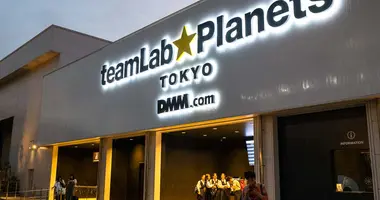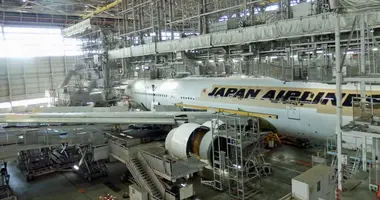Seiko Museum
The Seiko Museum in Tokyo traces the history of the Seiko watch and clock company showcasing many of Seiko's ground-breaking products.
Seiko Museum, Higashi-Mukojima, Tokyo セイコーミュージアム
The Seiko Museum in Higashi-Mukojima in north eastern Tokyo is an informative and well-designed museum and of interest to anyone with even a passing interest in clocks and watches.
The Seiko Museum (formerly the Seiko Institute of Horology) was established in 1981 as part of the company's 100th anniversary project near the site of a Seiko watch and clock factory that once stood in the neighborhood.
Seiko is one of the world's leading manufacturers of clocks and watches and now the official timekeeper of the Olympic Games.
 Children's clocks, Seiko Museum, Tokyo
Children's clocks, Seiko Museum, Tokyo Modern wristwatches, Seiko Museum, Tokyo
Modern wristwatches, Seiko Museum, Tokyo
Exhibits
The Seiko Museum is on two floors. The first floor has exhibits on the early beginnings and subsequent evolution of human timekeeping, clocks from Europe and the USA, the development of quartz and the sports timing experience showcasing Seiko as the timekeeper of the Olympics and other major sporting events.
Visitors can tour the museum using an iPad which provides extra commentary, photos and video of the exhibits.
The second floor has exhibits on the history of Seiko, which was founded by Kintaro Hattori in 1881. There are numerous ground-breaking Seiko timepieces on display including Japan's first alarm clock, wristwatch (the 1913 Laurel) and the world's first quartz watch.
Other highlights of Seiko's company history are the construction of the Wako Clock Tower in Ginza, and Japan's first TV commercial, which was for Seiko. Seiko also introduced the world's first six-digit LCD watch, the first TV watch, the first "kinetic" watch and the first Spring Drive watch.
 Historic wall clocks, Seiko Museum, Tokyo
Historic wall clocks, Seiko Museum, Tokyo An incense clock, Seiko Museum, Tokyo
An incense clock, Seiko Museum, Tokyo
Also on the second floor is a priceless collection of Japanese traditional clocks from the Edo Period of Japanese history. The first clock was believed to have been a gift from the missionary Francis Xavier to the feudal lord Yoshitaka Ouchi in Yamaguchi Prefecture 1551. From then on Japanese craftsmen studied the manufacture of Western clocks to produce mechanical timepieces for the elite. These clocks conformed to the country's unique temporal hour system.
Japan time corresponded to the position of the sun and a day was divided into 12 time periods: 6 for the daytime and six for nighttime. The system obviously varied with the seasons and the six daytime time periods were not the same length as the six night periods - except at the equinoxes when they are equal. The 12 periods were named after animals.
It was not until the Meiji Period in the nineteenth century with the introduction of high-tech Western engineering techniques and precision machinery, however, that the first clocks and fob watches were mass-produced by Seiko.
Further exhibits on the second floor focus on the founder, Kintaro Hattori (1860-1934), the Tokyo-born entrepreneur behind the company's rise, and individual Seiko products such as the Laurel wristwatch, which boomed with the temporary collapse of the German watch industry after World War I and the Quartz Astron, the world's first quartz wristwatch.
 Seiko Museum, Tokyo
Seiko Museum, Tokyo
Seiko Museum Tokyo Hours
Open 10 am-4 pm; closed Mondays, national holidays (open May 3, 4, 5) and over the New Year period.
Admission
Free.
Access
Seiko Museum (museum.seiko.co.jp)
3-9-7 Higashi-Mukojima, Sumida-ku, Tokyo 131-0032
Tel: 03 3610 6248
Seiko Museum is an 8-minute walk from Higashi-Mukojima Station on the Tobu Skytree Line or a 15-minute walk from Keisei-Hikifune Station on the Toei Asakusa and Keisei Oshiage lines.
By bus, the museum is opposite the Shirahigebashi-higashi bus stop. Buses run from Keisei-Hikifune Station.
A visit to the Seiko Museum can easily be combined with seeing the Tobu Museum and Mukojima-Hyakkaen Gardens.
 Seiko Museum, Tokyo
Seiko Museum, Tokyo





























